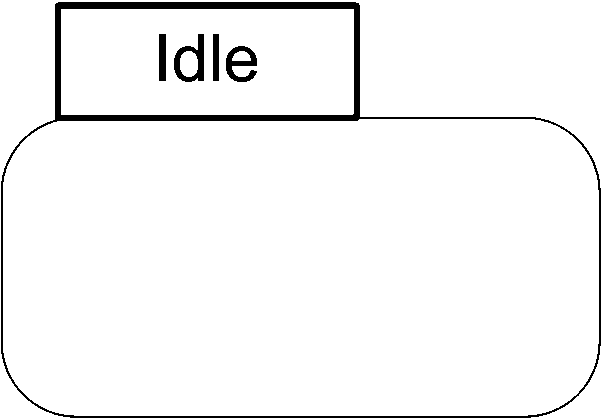States
States model a specific moment in the behavior of a classifier. This moment in time is defined by some condition being true in the classifier.
States model a situation in the behavior of a classifier when an invariant condition holds true. Put more simply, a state is a "condition of being" for the state machine and, by association, the classifier that's being modeled. For example, a coffee machine could be "Grinding Beans," "Brewing," "Warming Coffee," "Dispensing," etc. A state can represent a static situation, such as "Waiting for Username" or a dynamic situation where the state is actively processing data, such as "Encrypting Message."
A state is shown as a rectangle with rounded corners. The name of the state is written inside the rectangle. Figure 8-3 shows a simple state.

Figure 8-3. A simple state
A state name may be placed outside of the rectangle in a tab notation when showing composite or submachine states (see "Composite States" and "Submachine States"). You should either use the tab notation or place the name inside the state; don't do both. Figure 8-4 shows a state using a tab for the state name.

Figure 8-4. A state with its name in a tab
Within the rectangle a state can be divided into compartments as needed. UML defines the following compartments:
- Name ...
Get UML 2.0 in a Nutshell now with the O’Reilly learning platform.
O’Reilly members experience books, live events, courses curated by job role, and more from O’Reilly and nearly 200 top publishers.

